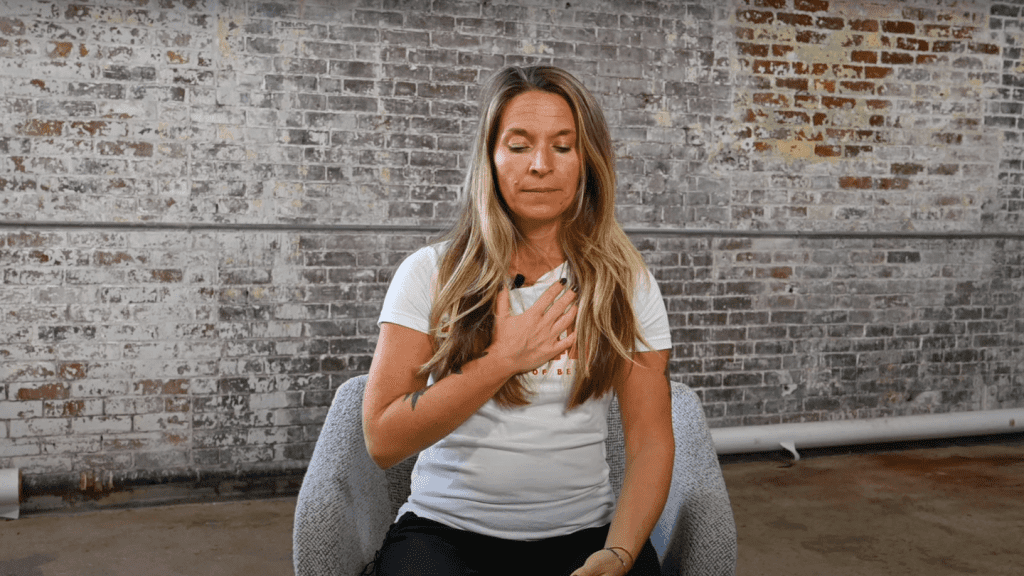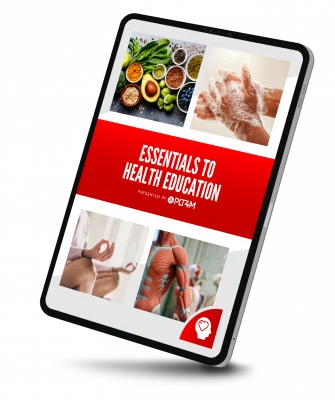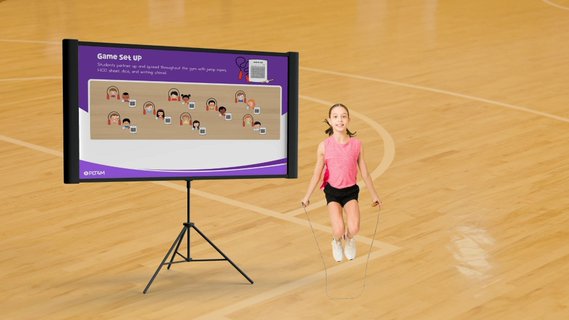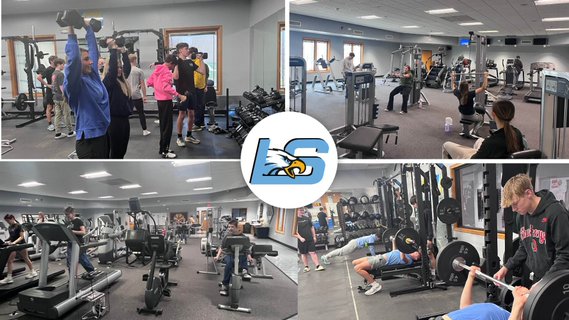Emotions play a critical role in the social and intellectual development of middle and high school students. As they navigate through a period of significant growth and change, understanding and managing emotions becomes a vital skill. Educators have the opportunity to guide students through this process with well-structured lesson plans on emotions. This article will discuss the importance of teaching social-emotional development in middle and high schools and provide 3 sample lesson plans on emotions that can be implemented in middle and high school classrooms.
Importance of Lesson Plans On Emotions For Middle & High School Students
At a very early age, we support our young children with the basic skills to identify and label basic emotions. Babies and toddlers start to identify things like ‘happy face,’ ‘sad face,’ ‘angry face,’ and different feelings.
And as young children start to attend more formal schools, they continue developing basic social skills to navigate their different emotions and other people’s emotions. At this stage of social-emotional development, there are countless preschool activities and elementary lesson plans on emotions.
But in many places, formal social-emotional learning starts to decrease in middle and high school. As young children transform into young adults, we assume they can begin to navigate different feelings and emotions independently. And while some students have built the skills to do this, many still need support to navigate their increasingly changing and strong emotions.
Here lies the importance of lesson plans on emotions for middle and high school students. Even as teenagers and young adults, middle and high school students benefit from integrating lesson plans on emotions.

When & Where To Teach Social-Emotional Learning In Middle & High School
The Collaborative for Academic, Social, and Emotional Learning (CASEL) is the nation’s leading organization advancing the development of academic, social and emotional competence for all students. CASEL defines SEL as,
“The process through which all young people and adults acquire and apply the knowledge, skills, and attitudes to develop healthy identities, manage emotions and achieve personal and collective goals, feel and show empathy for others, establish and maintain supportive relationships, and make responsible and caring decisions.”
The five SEL competencies are:
Self-awareness
Self-management
Responsible decision-making
Relationship skills
Social awareness
The relationship between our emotions and these SEL competencies are deeply intertwined! Therefore, schools can and should dedicate time to lesson plans on emotions, but where?
While social-emotional learning can happen in almost any subject or discipline, many schools want a dedicated time and place for SEL. While homeroom/advisory time offers a good opportunity, these are often short class periods that limit the ability to teach and practice SEL fully. Now, many schools have turned to health and physical education classes to introduce social-emotional learning concepts like lesson plans on emotions.
3 Free Lesson Plans On Emotions
There are countless ways to introduce lesson plans on emotions to middle and high school students. At PLT4M, we break down different emotions through guided videos and written lessons.
Through this emotional journey, students will learn about the science of our different emotions and how they make us think and feel in our body and mind. From there, students will practice and develop skills and strategies to process and unpack our emotions in a healthy and productive way.
Lesson plans on emotions are broken into three key parts:
Defining and Describing Emotions – We start each lesson by defining the emotion and how people experience the emotion in their bodies and minds.
Guided Practice – Each emotional topic is paired with an exercise or skill to help process and unpack the emotion. These range from breathing exercises to mindfulness and meditation strategies.
Guiding Questions – At the end of each session, students are encouraged to journal with a few guiding questions to take the emotional practice and apply it to their everyday lives.
PLT4M’s lesson plans on emotions topics are:
Stress – Physical, Mental, & Emotional
Excitement
Disappointment
Frustration
Gratitude
Anger
Happiness
Sadness
Love
Fear
Concern
Check out three free lesson plans on emotions from PLT4M below.
Get Our FREE Health E-Book!
The Essentials to Health Education
Get five free health lessons, pulled directly from our Health Curriculum. With lessons on Nutrition, Digital Citizenship, Personal Hygiene and more, there are tons of valuable insights!
1) Excitement
Excitement is a feeling of great enthusiasm and eagerness. The feeling of excitement gives us a heightened sense of happiness related to something that is supposed to happen in the future.
For example, there might be a big game or event coming up that you have circled on the calendar. As you think about this event, you might start to feel that bubbling sense of excitement. And while certain levels of excitement are a good thing, we also should be aware of how we handle excitement.
Excitement actually shows up physically the same way anger does. Our heart rate goes up, our body gets warm, and we might even notice tension in our hands or face.
So why should we be mindful about our level of excitement? Because on the other end of the emotional spectrum of excitement is disappointment. Through excitement, we can paint a perfect picture of how we expect an event or moment to go, and when it doesn’t go exactly as planned, we can be left feeling disappointed.
For example, you have the prom coming up, and you picture the perfect day with friends and family, only for it to rain and deter your plans. This might lead to disappointment if we haven’t managed our excitement with balanced levels of expectation.
Turning Excitement Into Intention
Let’s say we notice in our mind we have an expectation for a dance coming up. We have the most amazing day mapped out from pictures, to dinner, to a beautiful sunny day. Here, we can notice that we have certain expectations around our excitement and the big dance.
Our goal is to shift to intention. First, we can pause and focus on our intentions. “My intention for this dance is to have a good time with friends.” That shift allows us to move from a specific end result to a larger intention that will bring us happiness.
In this exercise of intentional thought, we can start to imagine something we want.
Intentional Thought Steps:
1) Pause and Center Yourself – Take a moment to pause and find space to focus on your thoughts. You can close your eyes and put your hand on your heart if that helps you to center yourself.
2) Think Of Something You Want – Maybe it is lunch or a new pair of shoes. Consider something that you want or that is coming up that you might be excited about.
3) Notice – Begin to notice what is happening in your body when you start to think about what you want or that expectation. Does your heart rate go up? Is your brain spinning?
4) Ask Yourself About Intention – Ask yourself what your intention is in this moment. For example, “My intention is to be grateful for whatever happens.”
5) Finish With A Breath – Take a big belly breath and exhale through your mouth and let go the thought of your excitement/expectation.
The goal of this exercise is to shift our mind from the excitement/expectation to an intention. This isn’t always easy, but when we move through this practice we might notice a shift in how we think and feel. It can give us the freedom to enjoy the little moments, without tying a ton of weight to a singular event or experience that can often come from excitement.
2) Disappointment
Disappointment is sadness or displeasure caused by the non fulfillment of one’s hopes or expectations. This happens in moments where things just don’t always work out or go as planned. For example, you worked so hard leading up to a big game and you lost.
Typically disappointment shows up as a heavy feeling in our body. We can feel disappointment as a heavy, gut wrenching feeling in our belly. Or even our shoulders feel so heavy that we are shrugged over in defeat.
And much like any other emotion, it isn’t a bad thing to experience disappointment. It is a normal emotion that often indicates we care about something. But we want to be mindful that disappointment doesn’t derail us. When the emotion of disappointment becomes so strong or lasts a long time, we can be burden by the heavy feelings that can come with it.
Pleasant vs Unpleasant Exercise
To help us handle the pendulum of different emotions like disappointment and excitement, we can use the labeling exercise “pleasant vs unpleasant.” We will go through a list of different situations, feelings, or emotions.
On the first pass, go through all the different emotions you feel. Do you like it or hate it? Fear it? Look forward to it? Wish for it to happen? Hope it never happens again? Get involved and imagine as much detail as you can.
Scenarios:
1) You fail a class.
2) Someone wakes you up early on the weekend.
3) You see something on social media you want to do but you can’t.
4) Someone gives you a gift when you werent expecting it.
5) You get caught in a lie.
6) You get praised for good work in your favorite class.
7) Someone gives you money for a special occasion
8) You get new shoes
9) A friend is angry with you for something you did.
10) Seeing a really bad movie.
11) You are starving after school and you get home and there isn’t one good thing to eat.
Now, the second time we go through this list, we will only identify each situation as pleasant or unpleasant. These are the only two words we can use to describe the different situations. Try not to add the same thoughts or imagining as we did the first time we went through the list.
If we can stop and identify pleasant or unpleasant, we can lessen our reaction to it. It can’t get a hold of us in the same way. It is like an avalanche that all starts with one snowball. If you can catch the thought before it starts to spiral we can keep things as snowballs rather than avalanches.
3) Happiness
Happiness is a feeling of pleasure or contentment. When we feel happy, we can get flushed cheeks, raised body temperature, and even a feeling of “butterflies” in our stomach. But happiness can also come in much more calm and peaceful ways, that we will look at in more detail.
To understand happiness, let’s take a closer look at two different terms – 1) Pursuit of happiness and 2) State of contentment.
The pursuit of happiness is something ingrained in the fabric of our country. It is in the very words of our US Constitution. And you may have even seen the famous Will Smith movie “Pursuit of Happiness.” And while we all can pursue happiness, this can sometimes leave us feeling like we are never truly happy. We end up in a constant state of seeking, often for material things, and never quite feel satisfied. Let’s be very clear, there is nothing wrong with wanting or pursuing happiness, but it shouldn’t be our only form.
Instead, there is a state of contentment that allows us to feel happiness within ourselves. Contentment is a form of happiness that is peaceful and present. We can feel contentment when we reflect and live in the present moment. It can be as simple as having a nice conversation with a friend or family member. Or you can experience contentment when you go for a walk in nature. Contentment allows you to find more simple forms of happiness that are all around you, rather than seeking or pursuing things that can sometimes feel unattainable.
Mindful Meditation
To experience and feel the difference between pursuit of happiness and state of contentment. To practice this meditation we will do the following:
1) Find Stillness – Come to an upright position, lengthening your spine. Close your eyes or rest your gaze on something in front of you.
2) Take Calming Breaths – Inhale through your nose and exhale through your mouth to bring yourself to focus and peace. This can take a few minutes, but be patient and allow yourself the opportunity to relax.
3) Experience The Pursuit Of Happiness – Next, put yourself in a place where you can imagine a situation where you are in the pursuit of happiness? What does that feel like in your body? Once you get the thing you want, how do you feel now? Are you truly happy or still wanting something more or different?
4) Experience A State Of Contentment – Now, put yourself in a place where you can feel a state of contentment? When is a time in your life that you can find inner happiness? Is it with a friend or family member? Are you somewhere specific? What does that feel like in your body? How do you feel? Are you wanting something different or are you content with where you are in that present moment?
Blue Zones
Happiness comes in many different forms and fashions, but researchers have looked at some of the key elements that have led to some of the happiest and healthiest communities. These places have been called “Blue Zones” and have some similar characteristics that are often observed. Three of these are:
Social Engagement:
Strong social connections and a sense of community are prevalent in Blue Zones. Socializing, spending time with family and friends, and having a sense of purpose contribute to overall well-being.
Closeness to Nature:
Many Blue Zones are located in areas with a natural, outdoor environment. Access to nature and a lifestyle that involves outdoor activities are common features.
Dietary Patterns:
Blue Zone populations typically follow a plant-based diet with a focus on vegetables, fruits, legumes, and whole grains. They consume moderate amounts of lean protein, often from plant sources.
There are other commonalities in Blue Zones, but let’s explore these three this week and see if any of these can help you to find a sense of contentment. Explore these in your life and if they help to feed your happiness in a state of contentment.
Key Takeaways on Lesson Plans on Emotions For Secondary Students
Managing emotions as middle and high school students can be complicated and overwhelming. However, through emotions lesson plans, students can work to both identify and address different feelings and emotions as they arise. Through formal practice, students can develop personal and social skills that help when managing emotions.
As more focus is put on social-emotional development in schools, lesson plans on emotions can offer an engaging and thought-provoking experience for middle and high school students.
Are PLT4M’s Lessons Aligned To Standards?
Yes, all of PLT4M’s lessons are aligned to Shape America national standards.
What types of lesson plans does PLT4M have?
Consider PLT4M your full learning management system for health and physical education.
PLT4M has a full slate of PE lessons for physical education teachers to choose from! From PE games to fitness activities, PLT4M has countless options. Check out some of the most popular below:








